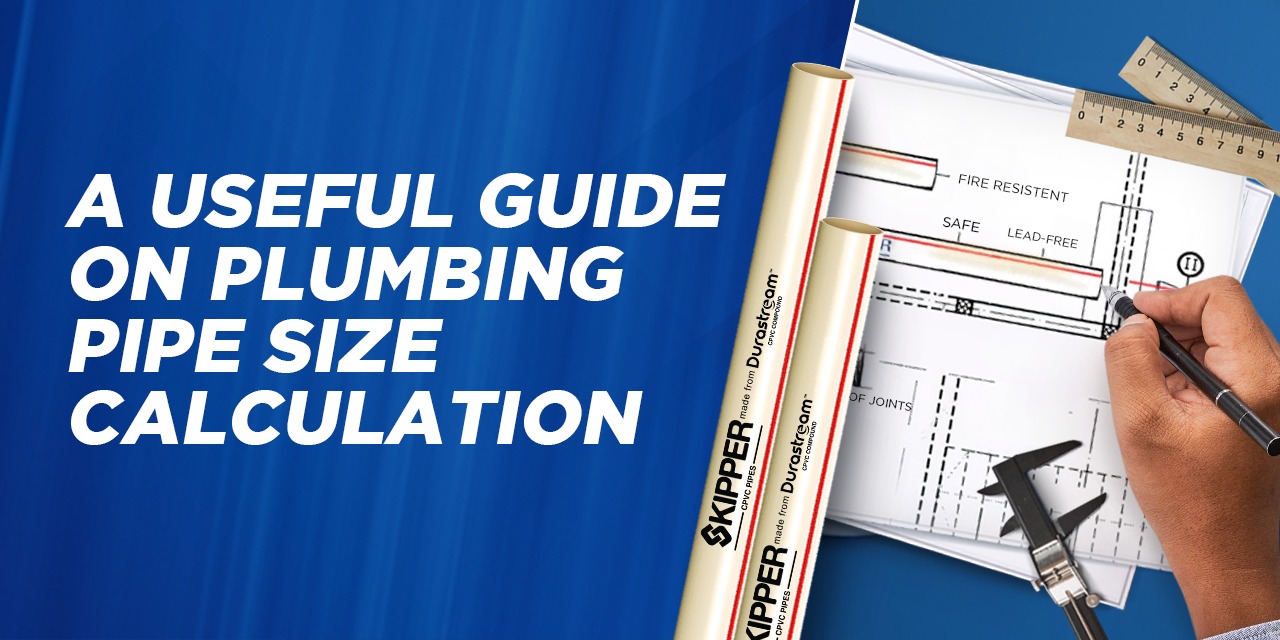Are you planning a plumbing project? Choosing the correct plumbing pipe size ensures efficient water flow, avoids pressure drops, and prevents pipe damage. This guide will equip you with the knowledge to calculate pipe sizes confidently, even if you’re not a plumbing expert.
Understanding the Basics:
Before diving into calculations, let’s know the key factors for plumbing pipe size calculation.
Flow Rate: Measured in gallons per minute (GPM), it indicates the amount of water flowing through the pipe at a given time.
Pipe Diameter: This determines how much water can flow through the pipe. They are measured in inches or millimeters.
Friction Loss: Friction within the pipe reduces water pressure. Smaller pipes have higher friction loss.
Pressure Drop: The water pressure decreases as it travels through the pipe.
Methods for Pipe Size Calculation:
Fixture Unit (FU) Method:
- This method assigns FU values to plumbing fixtures based on their water demand.
- Sum the FU values of all fixtures connected to the pipe.
- Consult charts or tables that link FU values to recommended pipe diameters.
Advantages: Simple and quick for residential applications.
Disadvantages: Not as accurate for complex systems or high flow rates.
Velocity Method:
- This method calculates the flow rate using the desired water velocity and pipe diameter.
- Choose a suitable water velocity based on material, pressure, and application (typically 3-8 feet per second).
- Use the formula: Flow Rate (GPM) = Pipe Area (square inches) x Velocity (ft/sec).
- Calculate the pipe diameter based on the desired flow rate and chosen velocity.
Advantages: More flexible and accurate than the FU method.
Disadvantages: Requires knowledge of water velocity selection and involves calculations.
Pressure Drop Method:
- This method determines the acceptable pressure drop and calculates the pipe size that minimizes it.
- Set an acceptable pressure drop per unit length (e.g., two psi per 100 feet).
- Use pipe sizing charts or software to consider factors like pipe material, length, and fittings for PVC, CPVC pipes etc.
Advantages: Ensures adequate pressure throughout the system.
Disadvantages: Most complex method, requiring specialized knowledge and tools.
Additional Considerations:
Plumbing Pipe Material: Different materials have varying flow characteristics and pressure ratings.
Consider copper, PVC, CPVC, PEX, etc., based on your needs.
Fittings and Valves: These add friction loss, so account for them in your calculations.
Future Expansion: Choose a slightly larger pipe size if you anticipate adding fixtures later.
Local Codes and Regulations: Always comply with plumbing codes for pipe size requirements.
Conclusion
Understanding how to calculate plumbing pipe sizes is essential for any plumbing project, ensuring efficient water flow and preventing potential issues such as pressure drops and pipe damage. While various methods, such as the Fixture Unit (FU) Method, Velocity Method, and Pressure Drop Method, offer different levels of simplicity and accuracy, choosing the most suitable method based on the complexity of your system and your level of expertise is crucial. Additionally, considering factors like pipe material, fittings, future expansion needs, and local codes and regulations further enhances the efficiency and effectiveness of your pipe sizing decisions. Mastering pipe sizing techniques is indispensable for successful pipe manufacturing, installation, and maintenance for residential or commercial applications.
FAQs:
Q. Do I need a professional plumber to calculate pipe sizes?
A. For simple residential projects, the FU method might be sufficient. However, consulting a professional plumber is recommended for complex systems, high flow rates, or commercial applications.
Q. What tools do I need for pipe size calculations?
A. You may only need FU charts and a calculator for the FU method. For the velocity and pressure drop methods, pipe sizing charts, software, or specialized knowledge might be necessary.
Q. Where can I find more information and resources?
A. Plumbing code books, online resources from plumbing associations, and manufacturers’ websites provide valuable information and tools.
Note: This guide is for informational purposes only. Always consult a qualified plumber for complex plumbing projects or if you have doubts about your ability to handle the calculations correctly.
By understanding these principles and methods, you can confidently choose the correct plumbing pipe size for your plumbing project, ensuring optimal water flow and efficient performance.




0 Comments